Drugs and guns fuel violence that makes killing and prison somehow normal
This article and others forthcoming on this topic are being produced as part of a project for the University of Southern California Center for Health Journalism’s National Fellowship, in conjunction with the USC Annenberg School for Communication and Journalism.
Where Do Kids Get Guns? Inmates Reveal How Easy It Is
Fernandez case highlights the long-term implications of incarcerating youthful offenders
Arrest of 12-year-old on manslaughter charges highlights challenges in cases of kids
Many violent young offenders were 'born into dysfunction'
Audio: Story Behind the Story: When Kids Kill
In children, trauma too often leads to tragedy
Millions spent to lock up young offenders
Other stories in this series can be found here.
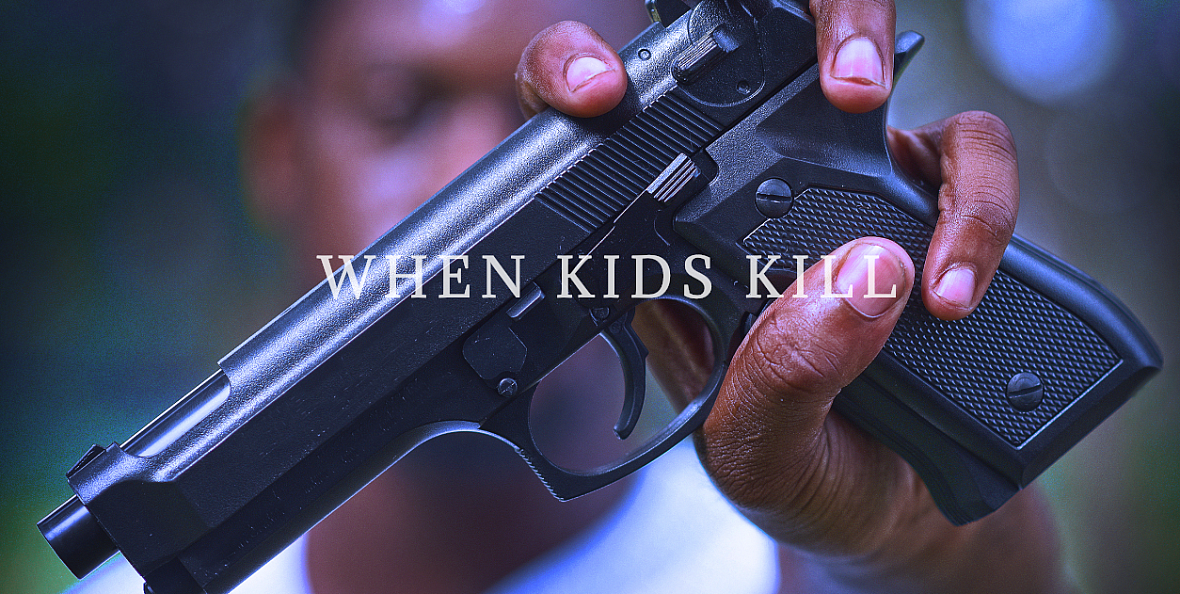
It was 68 degrees and sunny. School had let out for the day, but few kids were playing in Northwest Jacksonville neighborhood parks. Panama Park — a rectangular park with railroad tracks nearby on three sides — was empty. Much of the community is sliced every which way by the tracks. Those rail lines and the roads desperately in need of pothole repair make for a bumpy drive. Trash is strewn over medians.
At the Van Gundy Food Mart next to Ribault High School's campus, three students, all boys, had just parted ways. One had thrown his uniform polo over his shoulder and walked away from his friends, smoking, as he crossed the street.
Most of the strip mall shopping centers are half-empty, the signs of past businesses stripped from the storefronts and "for lease" signs in the windows. The parking lots look nearly abandoned, but the shards of broken glass make them shimmer in the fading afternoon sun.
With only a handful of supermarkets between U.S. Highway 1 and the Trout River, most of the area "food stores" are the type that advertise beer, lottery tickets and cigarettes alongside bread and milk.
Family Dollar stores dot the community. The frozen food sections boast a bigger pizza selection — two shelves — than vegetables — one whole shelf, but only if the french fries are included. Three-dollar bundles of socks and $5 packs of briefs have anti-theft tags attached. That food stamps are accepted is advertised in the window.
And then there's what you don't see: doctors' and dentists' offices, sit-down restaurants and well-kept sidewalks.
These scenes are from a recent day in Northwest Jacksonville, but there are similar pockets in Arlington and scattered around struggling parts of Jacksonville.
It is in this backdrop that many of the kids who go on to take part in a killing have grown up. Their communities lack many basic necessities. They live in poverty. They're surrounded by crime.
Howard was 17 when he shot and killed Najwan Khair-Bek, the son of Syria's then-economics minister, in a robbery of a food store in Lake Forest in 1992. He and his co-defendant, who was also 17, are serving life sentences.
"This is the life I lived,” Howard said. “The drama at a young age, and the community I grew up in," were contributing factors to his imprisonment, he said.
Over the last 20 months, the Times-Union has conducted an extensive examination of Duval County’s high juvenile homicide rate and the root causes most likely behind these crimes.
A major component of that reporting involved writing letters to more than 100 current prison inmates from Duval County. Fifty-seven wrote back, and 25 answered a 50-question survey about their lives developed by the newspaper in consultation with experts in mental health and criminal justice.
Of the survey respondents:
• 84 percent reported they had been shot at
• 72 percent said they’d witnessed someone get shot
• 60 percent had been forcibly robbed.
“You see these little kids that are being exposed to it and it can’t be a good thing that they grow up thinking that this is the way it should be,” said Jacksonville Sheriff’s Office Assistant Chief Scott Dingee, head of the crimes against persons section. “That we should tote guns, display guns and talk about doing violence.”
"Growing up and seeing ballers, nice cars on rims and ladies was the best thing in the world,” wrote Cornell Cornish, who was 17 when he shot and killed 30-year-old Charles Day at a Citgo station.
“When you want nice stuff and mom and/or dad can't afford it, and seeing people in the neighborhood sell drugs or whatever to achieve the mass of money to afford what you cannot, (it) makes you want to follow suit."
Concentrated need, highest crime
The largest share of Duval teens arrested in slayings come from Jacksonville’s urban core in neighboring ZIP codes 32208, 32209 and 32206.
Those same neighborhoods are the ones stacked with the most challenges: a disproportionate share of the county's impoverished residents, too few health care providers for low-income residents, shorter life expectancies and more violent crime.
Also concentrated in 32209: the county’s slayings. Since 2008, the Times-Union homicide database reflects that 240 people have been killed in the Northwest Jacksonville area. In that same span, 94 have been slain in 32208, just to the north. Of the five children who were shot dead this year, four were killed in 32209.
Guns are a major factor in the violent crime in Duval County.
In large part, that’s because illegal guns are not hard to come by in Jacksonville. The Jacksonville Sheriff’s Office has received reports of 1,516 guns stolen from unlocked or unsecured cars alone in just under three years.
And those are just the ones that are reported to police.
“It’s ridiculous,” Dingee said. “It’s scary.”
Guns were used in 52 percent of the violent crimes — murder, rape, robbery and aggravated assault — in Duval County last year, according to data from the Florida Department of Law Enforcement. Comparatively, they were involved in 31 percent of violent crimes statewide.
Duval County had 3,084 violent crimes that involved guns in 2017, second only to Miami-Dade County with 5,498, with about three times the population.
“We start chasing the superstar status,” wrote Cameron Holmes. “You start hustling, the money comes and then once you obtain a little status, that's when the negative energy's of jealousy, envy, greed and betrayal starts to come at you. That's usually how the wars, beefs, feuds and killings happen."
Holmes was 17 when he killed 49-year-old Joe Lloyd in 2006. Holmes had intended to settle a drug debt with one of Lloyd’s neighbors, but got into a confrontation with Lloyd and shot him once in the head.
“That's where the problem starts: Guns and drugs are too easily available to the youth,” Holmes said. He said handguns start at around $50 on the street. “I was 14 when I received my first gun as a gift from a friend.
"As long as you have drugs and guns in the hands of the youth,” he wrote, “the cycle will continue.”
Serious youth crime in Jacksonville
Felony arrests of Duval County youth have decreased by 19 percent between 2016-17 and 2017-18, according to the Department of Juvenile Justice. However, felony arrests had increased by 16 percent in the previous five-year span. Since 2013-14, felony arrests of Duval youth are down by 7 percent. Statewide, felony arrests of youth are down about 10 percent in the same span.
Young people, in general, are responsible for more of Duval’s killings than they are statewide. According to Florida Department of Law Enforcement data, about 40 percent of known homicide offenders statewide are under 25, compared to 51 percent in Duval.
Growing up, ‘it ain't easy’
Many of those stolen, illegal guns end up in the hands of kids or are used against them.
Among the 25 inmates who took the Times-Union’s survey, all but four said they had been shot at, and 15 said they had been robbed by force or weapon. Eighteen had been witnesses to someone else being shot.
Children living in the city’s urban core are disproportionately exposed to gunfire and are more likely to be victims of it.
A recent study of 20 years' worth of pediatric gunshot-wound data conducted by the University of Florida’s Health Center in Jacksonville found that children living in ZIP code 32209 were over-represented every year of the study and in the overall sample of 898 shooting victims. Those victims are mostly black boys.
Department of Health data shows that children in Jacksonville are also more likely to be killed by an assailant wielding a firearm. From 2006 to 2016, 69 children were killed in a homicide involving a firearm.
That’s about three kids per 100,000 who are gunned down, and is the worse rate among metro areas in the state.
Last school year, of the 30 Duval County Public Schools students who died, 10 were victims of gun violence. That was more than those killed by illness, car accidents or suicide.
All told, those factors show why only 40 percent of the Times-Union survey respondents said they felt safe in the neighborhoods they lived in as children.
“Growin’ up in the city Jacksonville, it ain't easy, but life is what you make it,” wrote DeQuan Dodson, who shot and killed 24-year-old Barrington Nickerson II over a $10 dispute after shooting dice. He was 17 at the time of the 2011 shooting.
“(There are) a lot of things that's not good for you to see, hear or do,” he said. “It's ‘no escape’ and a lot of people don't care what you been through or going through.”
DeQUAN DODSON | “Growin’ up in the city Jacksonville, it ain't easy, but life is what you make it."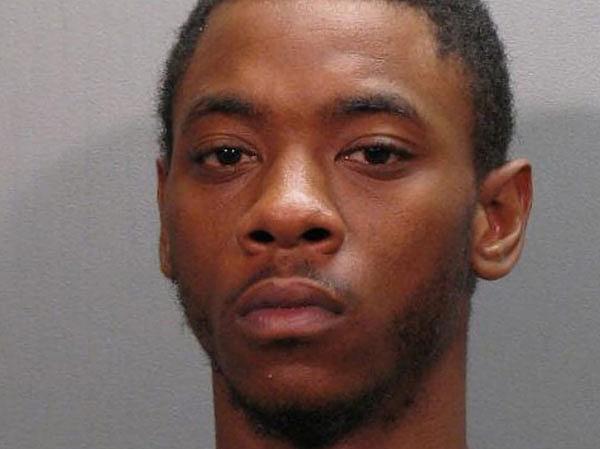
'A constant culture of guns, violence'
“They taught me how to make money and being around them brought popularity and a reputation that no kid wants to lose,” said Antonio Kilpatrick of his involvement with a gang at his high school in Virginia, shortly before he moved to Jacksonville during his freshman year. “Coming to school, fresh clothes, money in my pocket. … All this attention going to my head.”
With the illicit skills he picked up in Virginia, Kilpatrick said he began selling drugs. They brought money, and money brought friends and girls.
“I did what I ‘thought’ I had to do, and that was create a reputation,” he said. For him, that meant breaking into houses, selling drugs and carrying a gun. And so he continued his slide into crime.
Kilpatrick was 17 when he shot and killed 16-year-old Kenneth McCloud Jr. at a Sweet 16 birthday party. He was one of just a few kids who explicitly mentioned any gang association in his letters.
Few Duval County kids identify as gang members — only about 3.4 percent of local kids said they’d ever been in a gang and 2.5 percent said they were currently in one, according to a 2016 statewide survey. That puts Duval on par with the state average, and in the middle of the pack among metro areas in Florida.
Of those kids who said they’d been in gangs, less than 18 percent said their gang had a name.
Part of the appeal of gangs to young people is a sense of family and belonging. Few kids who wrote to the Times-Union had anyone they looked up to; only five of the 25 survey respondents said they had a positive mentor or role model.
The Jacksonville Sheriff’s Office says there are 51 documented gangs in the city with more than 1,500 known members. Sheriff Mike Williams routinely reminds the public that, according to research on the city's crime, less than 1 percent of the population is responsible for about 40 percent of its violent crime.
But, some of the youth who fall into those classifications — and people who know them agree — don’t always identify themselves as gang members, even when they commit crimes together and meet other statutory classifications.
Police in Jacksonville say some gangs try to label themselves as “entertainment groups” that are about making music and videos, not crime.
The videos and lyrics can be shocking. And they’re not hard to find on YouTube.
Filmed in broad daylight on Jacksonville streets, kids and young men with guns dance and jump around for the camera. One video even begins with the re-creation of a drive-by shooting.
Dingee, from the Sheriff’s Office, said the videos show “a constant culture of guns, violence, drugs, drinking, even with little kids and in public places.”
Some videos flash a disclaimer about the guns being toys or props.
“We young and we dumb; We may be young but we do carry guns; When I shoot, you better run; B**** I’m coming for your funds,” raps one young man, gun in hand, to the camera in a 2016 video with a title that can’t be printed in the newspaper. It has about 121,000 views.
“Run back to the car, and get back on my side of town; It’s official when it’s war; We up good; Check the score,” goes a song by another group from 2017 with almost 100,00 views. The video depicts running down and shooting rivals. It adds: “Premeditated, first degree, when it’s war time.”
Dingee said the disrespect in those videos can lead to shootings, and over the last 10 years, social media has increasingly escalated these feuds.
Kilpatrick said as he got more involved in crime and the lifestyle that came with it, his troubles escalated.
"Now people are trying to beef with me over all that and I wasn't caring until I got shot at after a party one night,” he said. “Now, I got to get me a gun to protect myself from whoever gunning at me. People shooting at me now I'm shooting back."
“At the time I was still going to school making good grades,” he said. “It wasn't like I dropped out or nothing. The fast life just got a grip on me and I couldn't get loose if I wanted to because I was in too deep."
Inmates offer suggestions to prevent at-risk youth from finding trouble
Martial arts. Adults to help with homework. A safe spot to try sports. A place to pursue passion. A mentor who could connect.
Among the dozens of Duval County inmates who are in prison for their roles in a death, many who wrote with the Times-Union shared the resources and opportunities they wished they'd had access to as children.
Similarly, many hope to work in mentoring and youth programming when they are released from prison because they believe that they can provide a perspective and understanding of youth today that many adults in their lives could not or did not offer to them.
Below, a selection of ideas from incarcerated teens themselves.
"By the age of 16 or 17, I'd say most kids at least have an idea of what they want to do with their life, but not a single clue on how to get started. ... Everyone can't be on the football or basketball team, or debate team or chess club for that matter. But I guarantee that everybody in high school knows how to try out or sign up for those programs. But what if none of that interests them? What if there's nothing available that coincides with their interests or their skills or mental or physical abilities? They're going to find something to get into. And (what) is easier to get into than trouble? Take me for example: As far back as I can remember, I've been infatuated with all things aviation. If I knew of a program that I could've entered that would've allowed me to learn anything about the aviation field, I would've been all in. No doubt." AARON WRIGHT, serving a 35-year sentence for his role in a 2005 murder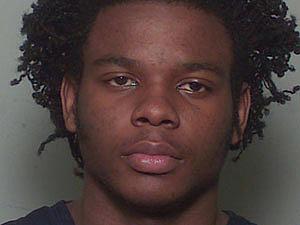
"I sincerely think the best thing that could have happened that would have prevented this and corrected my conduct was military academy, some school of that nature." CONNOR PRIDGEN, serving a life sentence for a 2010 murder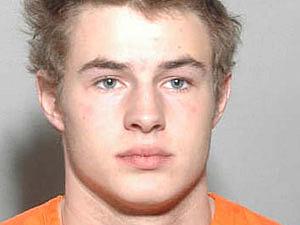
"Any type of positive male mentor or role model. We didn't have that in our household. Some male figure who would have made sure I attended school, church, didn't let me get into trouble and punished me but did it the way a child should be punished (taking away games, doing chores, no play time outside, no TV time, many other ways to be punished fairly!)." JULIAN FOSTER, serving two life sentences for second-degree murder and armed robbery, both in 1994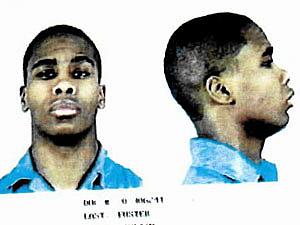
"It's four things I believe all children should have growing up and that's: security, love, education and fun. With this and the right leadership, what child can't succeed?" ANTHONY WAGNER, serving a 30-year sentence for his role in a 2004 murder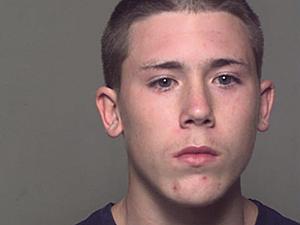
"Personally, I feel more involvement with youth groups, after school programs especially and utilization of community centers would help. I tried to get into PAL (Police Athletic League) several times to no avail simply because I was not in the actual neighborhood; I tried to ride my bike there and was rebuffed over and over. I didn't learn about the use of a community center until I was given community service hours! ... Just a caring word or thought can change everything. The so-called latch-key kid, how come a group can't say, 'Hey, we're at the community center, come here do your homework & wait for mom, dad.' I personally got into trouble when I became idle. I am a creative person. I'd have been wonderful in formal martial arts training or gymnastics." PAUL DIXON, serving a life sentence for a 1993 first-degree murder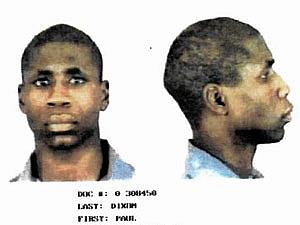
"The majority of kids committing these homicides can be reached but it takes the right type of person. A person who's been there. Whose been inside their shoes, live in their environment, traveled down that road of destruction they're headed before it's too late." DeWAYNE WARD, serving a 25-year sentence for his role in a 2002 murder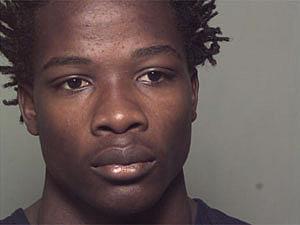
Resources for families in need of help
The following list of services and agencies for families and youth was suggested in its entirety by area nonprofits:
• Parent Help Center (youth and parents services), (904) 476-1116
• Full Service Schools (mental health counseling for youth and parents), (904) 390-3247
• Youth Crisis Center's "Family Link" (youth and parent counseling), (904) 725-6662
• Daniel Memorial's “Journey to Success" (youth case management), (904) 296-1055, ext. 2340
• 100 Black Men (youth mentoring), (904) 764-2445
• Big Brothers Big Sisters (youth mentoring), (904) 727-9797
• Communities In Schools (afterschool youth programs), (904) 344-3900
• Police Athletic League (afterschool youth programs), (904) 854-6555
• Florida Youth Challenge Academy (youth quasi-military academy), (866) 276-9304
• Fresh Ministries' "Fresh Futures" (youth only), (904) 355-0000
• Delores Barr Weaver Policy Center (counseling and care management for girls, young women and female-identifying youth), (904) 598-0901
• JASMYN (services for LGBTQ youth ages 13-23), (904) 389-3857
• National Youth Advocacy Program (individual, family and group therapy; treatment coordination), (904) 601-2191
• The United Way has a free, 24/7 referral hotline that can connect families to resources, 2-1-1
• The Department of Juvenile Justice's database of community services for youth is available here. It includes recommendations for mental health, education, life skills, substance abuse, job skills and more.
[This story was originally published by Florida Times-Union.]

